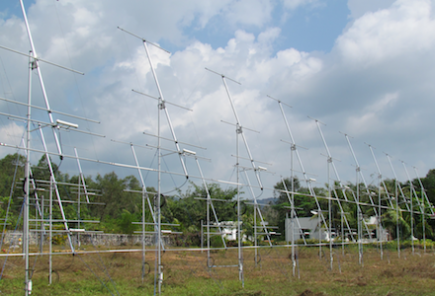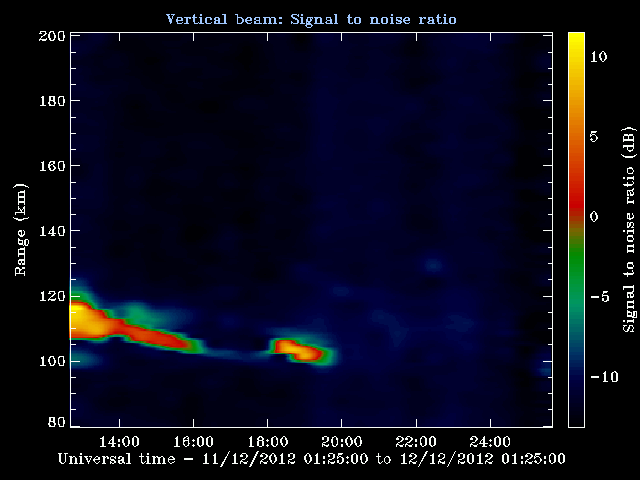
ATRAD’s Steerable Ionospheric Analyser (SIA) has been designed specifically to observe ionospheric irregularities and their east-west drift in the E and F regions. The radar operates as a coherent Doppler back-scatter radar, with the radar beam directed perpendicularly to the geomagnetic field at E or F region heights. The beam elevation will vary according to the location where the observations will be made. The typical configuration for this system uses a 24kW solid-state transmitter and a 24 five-element Yagi antenna array (SIA 24/6). The SIA 24/6 is designed to support fixed elevation systems with a steered azimuthal beam. Contact ATRAD for alternative configurations where fixed beam or a variable elevation angle is required.
The Ionospheric Radar is available in a monostatic configuration and a bi-static configuration where independent transmitter and receiver systems are synchronised by GPS Frequency references at the transmit and receive sites. A Receive Only configuration is also available for applications where an existing radar transmitter source is to be used.
Key Features:
- Observation of ionospheric irregularities in the E & F regions
- Monostatic, bistatic and receive only configurations
- Azimuthal steering, fixed elevation angle
- Remote GPS synchronisation
- 80—850 km sounding range
- Remote monitoring and control
- Online data analysis
- Data acquisition and analysis
Exciter: Single Channel, 16-Bit
Pulse Repetition Frequency: 5 kHz (max)
Sounding Range: 90-850km; 110km at 80°
Range Resolution: 150m – 4,000m (software selectable)
Range Gates: Up to 6,000
Remote Control: Remote monitoring and control via internet, Ethernet or dialup modem
- Transmitter/Receiver
Receiver: 6-Channel, 16-bit
Frequency: 30-60 MHz (Fixed frequency)
Transmitter power: 20kW to 100kW
AC Mains Power: 220-240V AC or 110-120V AC 3-Phase
- Antenna array
Array Configuration: Rectangular array of 24 to 256 antennas.
Elevation Range: 0-45° off-zenith
Antenna beam width: ≥ 5°
Steering Resolution: Typically 20-50 steps across the steering range.

